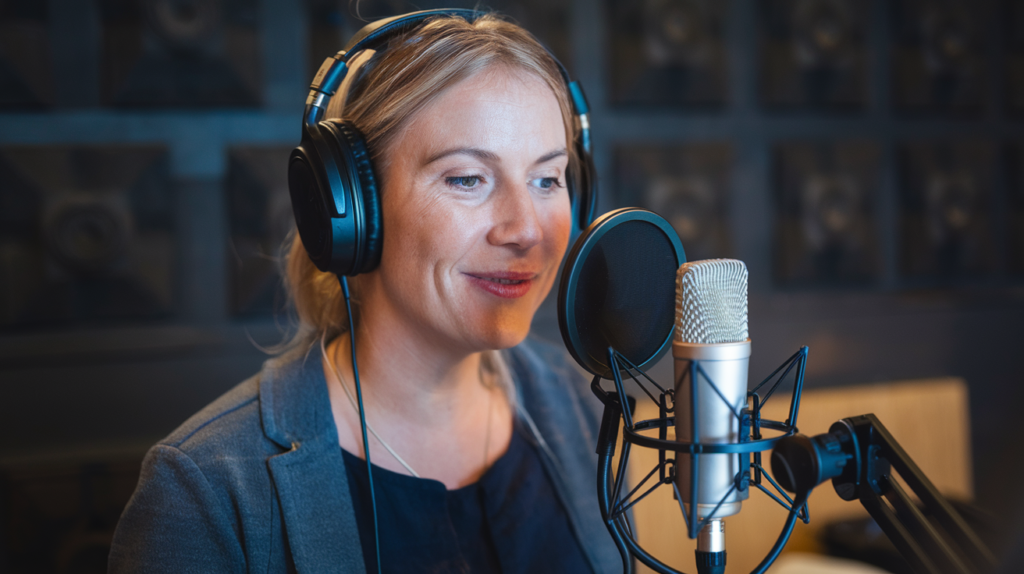Key Takeaways
- Approximately 8% of New Zealand’s population can converse in Māori, reflecting a growing interest in language revitalization.
- Recent census data indicates around 186,000 people speak Māori at home, underscoring its integration into family and community life.
- An estimated 50,000 fluent speakers are actively involved in preserving the language through teaching and cultural events.
- Educational policies increasingly promote Māori in schools, fostering fluency among younger generations and enhancing cultural significance.
- Community initiatives such as workshops and immersion programs play a vital role in encouraging active participation and usage of the language.
- Technology is pivotal for revitalizing Māori by providing interactive learning tools and platforms that engage new audiences.
Have you ever wondered how many people speak Māori in New Zealand? This fascinating language, rich in culture and history, is more than just a means of communication—it’s a vital part of the country’s identity. As interest in indigenous languages grows worldwide, understanding the current status of Māori can shed light on its revival efforts and cultural significance.
In recent years, efforts to promote and teach Māori have gained momentum. But how many people are actually speaking it today? You might be surprised by the numbers and what they reveal about New Zealand’s commitment to preserving this unique heritage. Dive into this exploration to discover not just statistics but also the stories behind them that highlight why every voice matters in keeping Māori alive.
Overview Of Maori Language
Māori, the indigenous language of New Zealand, holds significant cultural and historical value. With roots tracing back over a thousand years, it reflects the rich heritage of the Māori people. The language encompasses unique expressions that convey traditional knowledge, customs, and values.
As of recent statistics, around 8% of New Zealand’s population can converse in Māori. This number indicates a growing interest in revitalizing the language through education and community initiatives. Schools increasingly incorporate Māori into their curriculums, aiming to nurture fluency among younger generations.
Efforts to promote Māori also extend beyond classrooms. Media channels feature more content in Māori, enhancing its presence in everyday life. These initiatives encourage wider engagement with the language while connecting people to their cultural identity.
Incorporating voice talent skilled in Māori can enhance projects aimed at celebrating this unique linguistic heritage. Whether for educational materials or media productions, employing a voice artist fluent in Māori ensures authentic representation and enriches communication efforts across various platforms.
Current Statistics
Approximately 8% of New Zealand’s population can converse in Māori. This percentage reflects a growing interest in the revitalization of the language, driven by education and community initiatives.
Recent Census Data
The latest census data reveals that around 186,000 people reported speaking Māori at home. This statistic highlights not only the current speakers but also the increasing recognition of Māori within families and communities. The integration of Māori into daily life encourages younger generations to learn and use the language actively.
Estimates By Language Organizations
Language organizations estimate that fluent speakers number approximately 50,000 individuals. These estimates indicate a committed group dedicated to preserving the language through various means such as teaching, cultural events, and media representation. With more programs focusing on skill development among teachers and voice talent for educational content, enthusiasm for learning Māori continues to grow across New Zealand’s diverse landscape.
By nurturing fluency among youth through creative projects that incorporate skilled voice artists or actors using Māori in their work, you contribute positively to keeping this linguistic heritage alive while enriching communication efforts across platforms.
Factors Influencing Maori Language Usage
Māori language usage in New Zealand hinges on several pivotal factors, shaping its presence and growth within the community.
Educational Policies
Educational policies play a crucial role in promoting Māori language. Schools increasingly integrate Māori into their curriculums, encouraging students to learn both the language and its cultural significance. Government initiatives support bilingual education models that foster fluency among younger generations. With resources dedicated to teacher training and curriculum development, more children gain exposure to Māori from an early age. The emphasis on inclusive education helps ensure that future generations embrace this linguistic heritage.
Community Initiatives
Community initiatives significantly enhance the use of the Māori language. Local organizations often host workshops, cultural events, and immersion programs that encourage active participation in learning. Families are also taking steps to incorporate Māori into daily life by using it at home and within community gatherings. These grassroots movements create a supportive environment for speaking the language openly and proudly. By celebrating Māori culture through festivals and public events, communities reinforce the importance of language preservation while fostering a sense of belonging among speakers.
Educational policies and community initiatives collectively strengthen the foundation for increasing Māori language usage across New Zealand, ensuring its vibrant legacy continues for future generations.
Cultural Significance Of Maori Language
The Māori language holds immense cultural significance in New Zealand, serving as a vital link to the nation’s heritage and identity. It’s not just a means of communication but a vessel for storytelling, traditions, and values that have been passed down through generations.
Revitalization Efforts
Revitalization efforts for the Māori language have gained momentum over recent years. Schools across New Zealand increasingly integrate Māori into their curriculums, helping younger generations connect with their roots. Community initiatives, such as workshops and cultural events, further nurture this connection by encouraging families to use Māori in everyday conversations. These grassroots movements foster an environment where speaking Māori feels natural and valued.
Moreover, organizations dedicated to promoting the language work tirelessly to create resources that make learning accessible. From online courses to immersive programs, they ensure everyone has the opportunity to engage with this rich linguistic heritage. The commitment shown by these groups reflects a collective desire not only to preserve but also to celebrate the language’s vibrancy.
Media Representation
Media representation plays a crucial role in elevating the status of the Māori language within broader society. Television shows, films, and radio broadcasts featuring fluent speakers showcase its beauty and relevance today. When you see your culture represented authentically on screen or hear it resonate through music and podcasts, it strengthens community bonds while attracting interest from those outside traditional circles.
Utilizing skilled voice talent in these media projects amplifies authentic representation. A talented voice artist brings characters and stories alive while ensuring accurate pronunciation and respect for cultural nuances—essential for maintaining integrity within storytelling.
As more productions incorporate Māori narratives or themes into their content strategies, they contribute significantly to revitalization efforts by reaching wider audiences. This exposure cultivates appreciation for not just the language itself but also its underlying cultural significance.
Embracing these elements creates an ecosystem where every speaker feels empowered—and each voice matters in keeping this unique aspect of New Zealand’s identity vibrant for future generations.
Future Of Maori Language
The future of the Māori language looks promising, with numerous efforts underway to ensure its continued growth and relevance.
Growth Projections
Growth projections indicate a steady rise in the number of speakers, driven by educational initiatives and community engagement. Schools increasingly adopt bilingual education models, integrating Māori into their curriculums alongside English. This approach not only nurtures fluency among students but also instills a sense of cultural pride. Moreover, government support for language preservation strengthens these efforts, ensuring resources are available for teaching and learning.
Recent trends show an uptick in participation in cultural events and workshops focused on Māori language use. These grassroots movements foster connections between generations, encouraging families to communicate in Māori at home. As more people embrace this heritage, you can expect the community of speakers to expand significantly over the coming years.
Role Of Technology
Technology plays a crucial role in revitalizing the Māori language and making it accessible to wider audiences. Online platforms offer interactive learning tools that engage learners of all ages. Apps dedicated to language practice allow users to integrate Māori into their daily routines seamlessly.
Social media serves as another powerful tool for promoting the language. You can find vibrant communities sharing resources, stories, and discussions that celebrate Māori culture online. Additionally, streaming services often feature content created by or featuring fluent speakers which not only entertains but also educates viewers about linguistic nuances.
Incorporating digital media strategies ensures that younger generations encounter the language frequently and meaningfully—whether through podcasts or video series featuring skilled voice talent who bring narratives to life with authenticity and respect for cultural context.
With these collective efforts from educational institutions, communities, and technology providers alike, you’ll see a resilient future for the Māori language flourishing throughout New Zealand.
Conclusion
The Māori language stands as a testament to New Zealand’s rich cultural heritage. As you explore its significance, you’ll see how collective efforts in education and community initiatives are breathing new life into this important language. With around 186,000 individuals speaking Māori at home and increasing participation in learning programs, there’s a bright future ahead for the language.
Embracing Māori not only preserves its history but also strengthens connections within communities. By engaging with these revitalization efforts, you can play a part in ensuring that the vibrancy of the Māori language continues to thrive for generations to come. Your involvement matters as it contributes to a lasting legacy that celebrates identity and culture in Aotearoa.
Frequently Asked Questions
What is the significance of the Māori language in New Zealand?
The Māori language is a vital part of New Zealand’s cultural and historical identity. It serves as a connection to heritage, storytelling, and traditions. Its revitalization efforts reflect growing interest in preserving this indigenous language among younger generations.
How many people speak Māori in New Zealand?
Approximately 186,000 people reported speaking Māori at home according to recent census data, which accounts for about 8% of the population. This number indicates a rising interest in learning and using the language within families and communities.
What initiatives are promoting the use of Māori?
Schools are incorporating Māori into their curriculums, supported by government initiatives that promote bilingual education. Community organizations host workshops and cultural events to encourage everyday use of the language among speakers.
How does media representation impact the Māori language?
Media representation plays a crucial role by showcasing fluent speakers through television shows, films, and radio broadcasts. This exposure elevates the status of the language and strengthens community bonds while attracting broader audience interest.
What future trends exist for the Māori language?
Future trends indicate promising growth due to educational initiatives and community engagement. Increased participation in cultural events, along with government support for preservation efforts, suggests that fluency will continue to rise across generations.
How is technology aiding in revitalizing the Māori language?
Technology enhances accessibility through online platforms and apps dedicated to teaching Maori. Social media promotes vibrant communities sharing resources while streaming services provide content featuring fluent speakers to educate viewers on linguistic nuances.







